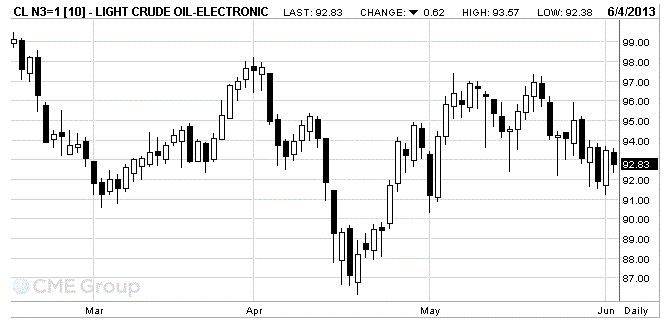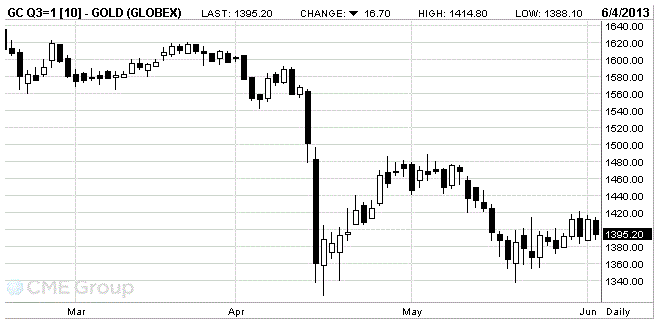Notícias do Mercado
-
16:40
Oil: an overview of the market situation
Oil prices fell slightly, dropping at the same time below $ 102 a barrel as concerns about demand after weak manufacturing data from the U.S., which were presented yesterday, was offset by expectations that central banks must set aside any steps to rein in its efforts to stimulation. Recall that yesterday's data showed that manufacturing activity fell in May to its lowest level in nearly four years. But the data curbed speculation that the U.S. Federal Reserve will soon complete the program or reduce monthly purchases of assets of $ 85 billion, increasing growth in other assets and limiting losses for oil.
Experts point out that oil prices will most likely not vary considerably, until investors get a better idea of when the Federal Reserve will cut back its incentive program. Part of shedding light on the economic picture will help data on the number of employed in non-agricultural sector, which will be published this Friday.
Oil is also under pressure amid fears of further growth stocks in the United States. According to forecasts, stocks of distillates, which include heating oil and diesel, rose by 1.3 million barrels last week. Gasoline stocks are estimated to have grown by 600,000 barrels in the week ended May 31.
But the study, which took place before the weekly report on inventories from the American Petroleum Institute (API) and the U.S. Department of Energy showed that crude oil is likely to fall by 200,000 barrels.
The cost of the July futures on U.S. light crude oil WTI (Light Sweet Crude Oil) fell to 92.83 dollars a barrel on the New York Mercantile Exchange.
July futures price for North Sea Brent crude oil mixture fell $ 0.3 to $ 102.11 a barrel on the London exchange ICE Futures Europe.

-
16:20
Gold: an overview of the market situation
Gold prices have declined substantially, while leaving below $ 1,400 an ounce, which was associated with an increase in concerns about demand in the world's largest consumer of gold - India, after the government further restricted the import of precious metals. As it became known, the Reserve Bank of India has extended the restrictions on the import of gold by banks, which was introduced last month. It should be noted that gold imports will only be allowed to meet the needs of exporters of gold jewelery. This happened after the gold imports from India jumped in May to 162 tons from 142.5 tons in April. We add that the fall in metal prices also contributed to the strengthening of the dollar and uncertainty about the timing of the completion of the incentive program by the U.S. Federal Reserve.
Recall that yesterday, prices rose by almost 2%, after U.S. data showed that manufacturing activity slowed to its lowest level in nearly four years, weakening the argument as to whether the Fed will reduce the monthly bond purchases, which now total $ 85 billion worth noting that in the past month, the central bank said it may complete the program of asset purchases sooner if economic indicators show signs of further strengthening.
Experts point out that before the next meeting of the policy of the Federal Reserve System, which will be held in late June, the economic data in the U.S. will remain the focus of attention. The first is to draw attention to the report on the number of jobs in the non-agricultural sector, which will be presented this Friday.
Also today, it was reported that gold holdings in SPDR Gold Trust remained unchanged on Monday, which is fixed for the fourth consecutive day.
The cost of the August gold futures on COMEX today dropped to 1395.20 dollars an ounce.

-
06:25
Commodities. Daily history for Jun 3’2013:
Change % Change Last
GOLD 1,411.60 19.00 1.36%
OIL (WTI) 93.25 1.28 1.39%
-